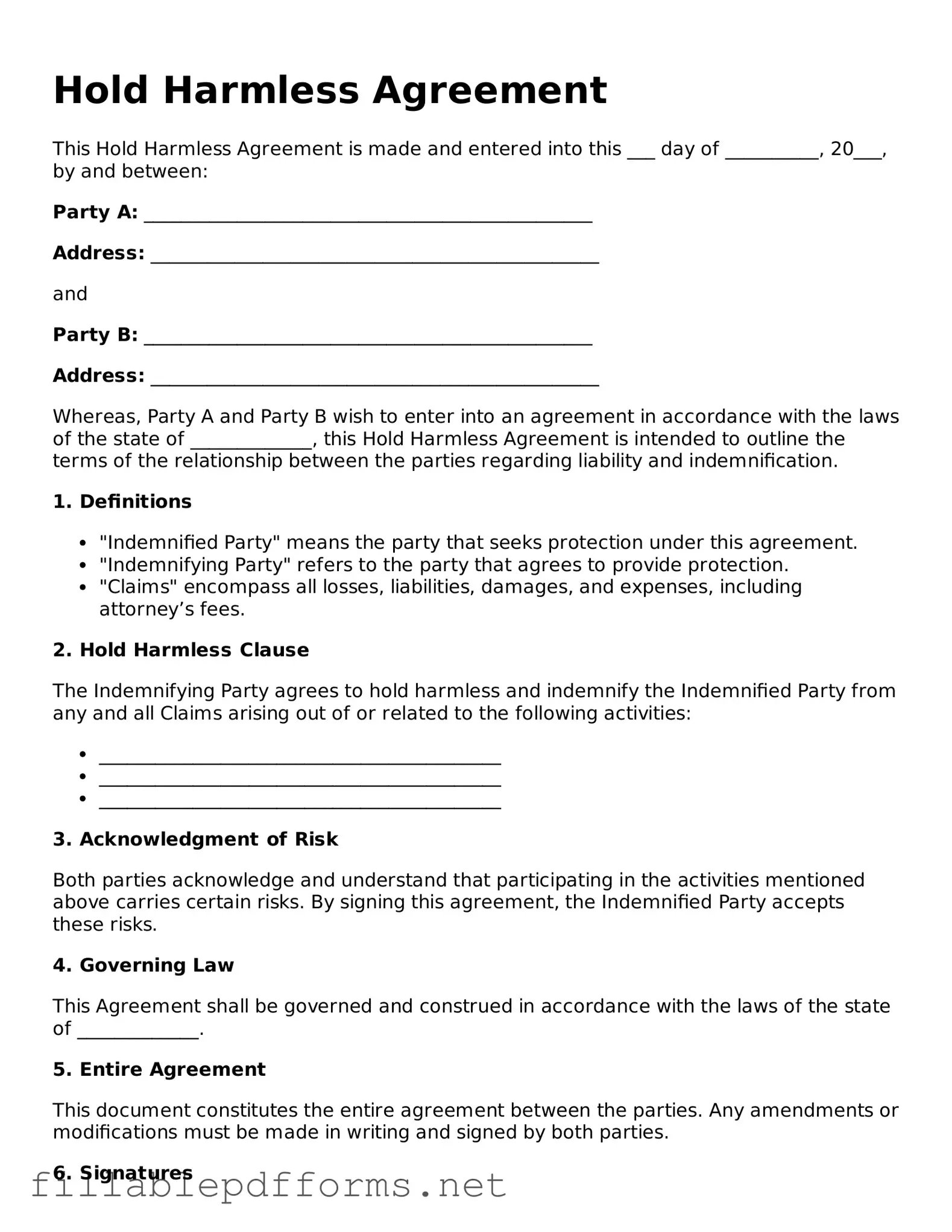Blank Hold Harmless Agreement Template
A Hold Harmless Agreement is a legal document that protects one party from liability or claims resulting from the actions or negligence of another party. This form is commonly used in various situations, such as contracts, events, and property rentals. By signing this agreement, individuals or organizations agree not to hold each other responsible for certain risks or damages.
Launch Editor Here
